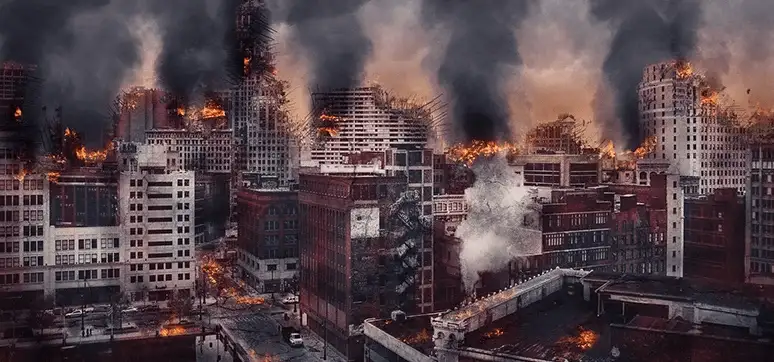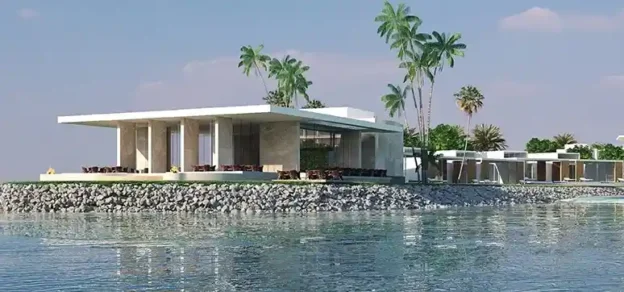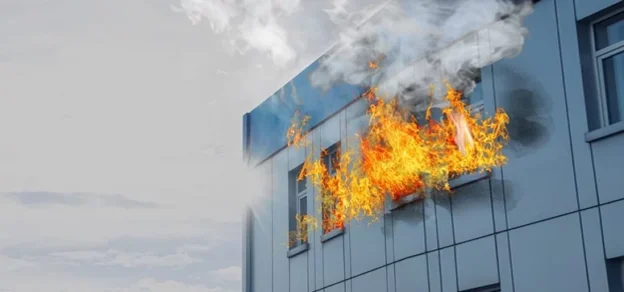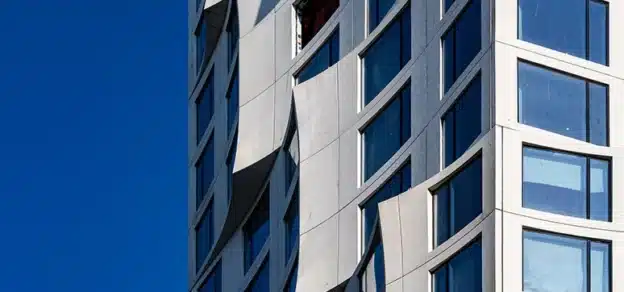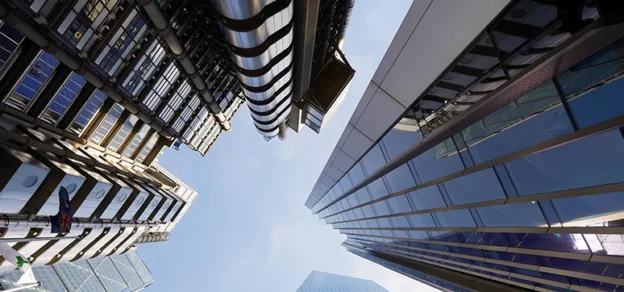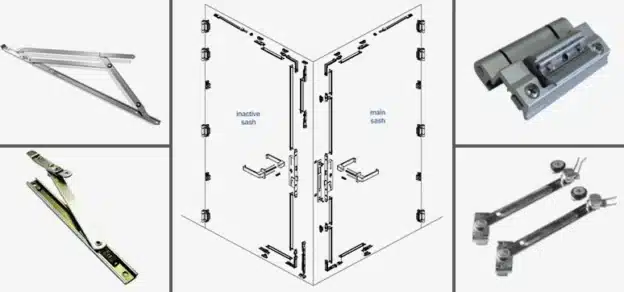The possibility of a fire is a major concern when constructing a building. To protect those who inhabit these structures, specific attention is paid to the fire resistance of the building materials. Buildings that use a glass exterior façade, and curtain wall systems have a low fire-resistance rating and as a result, elements such as sprinkler systems are used to increase the fire-resistance rating. These elements allow the fire to spread slowly throughout the building, giving time for those inside to evacuate before the building materials start to fail and collapse.
If a fire were to break out in a high-rise building, the spread of fire would be vertical – going from one floor to the next, followed by the flow of air currents. This is because the void between the floor and the curtain wall is not properly sealed. The fire will affect both sides of the curtain wall system causing premature failure of the wall and potentially the vision glass. To reduce the spread of fire for 2 hours, a properly designed and tested perimeter fire barrier system is used with rock wool.
Cavity Barrier Requirements As Per The UAE Fire Code
Chapter 1 clause 4.5.4

• Cavity fire barriers shall be incorporated into the façade design on every floor horizontally to restrict flame spread vertically and a minimum of two such barriers shall be provided on each side and face of the building
• Cavity barriers shall be incorporated vertically into the façade design on every floor to restrict flame spread laterally
• The installation shall ensure that compartmentation is established between the façade skin and primary substrate and cavity exists for the fire to pass through
Protecting the perimeter also requires the extension of the rated floor to the exterior wall surface. The perimeter fire barrier system and the sealing of the perimeter joint help in maximising the integrity of the wall system. This can keep the wall and window system intact for a longer period of time.
Other benefits of these precautions include:
• Forcing the fire to exit the building
• Preventing the movement of flames, hot gases and smoke to the floors above
• Protecting the structural elements and helps prevent failure of the spandrel system
• Maximising fire protection of non-fire-rated walls
• Giving time for occupants to evacuate and first responders to secure the building
• Providing additional protection if sprinklers or fire alarms fail
Specification for Curtain Wall Fire-Rated Systems

• Aluminium mullion and transom curtain wall assembly (non-fire-rated)
• Concrete floor assembly (minimum 12’’ thickness) with concrete drop beam 2 hours fire-rating
• Minimum 4” thick foil-faced curtain wall insulation (mineral wool min. 4 PCF density) securely attached to framing as per methods described in any UL or Intertek-approved perimeter joint system. Curtain wall insulation to completely fill the spandrel at floor level and cover vertical mullions
• Minimum 4” thickness mineral wool (minimum 4 PCF density) compressed at 33%
• Minimum 1/8” (wet) thickness firestop joint spray to completely cover mineral wool and overlap a minimum of 1/2” onto a concrete floor and curtain wall
Curtain Wall Fire Stop System
1. Aluminium mullion and transform curtain wall assembly (non-fire-rated)
2. Concrete floor assembly (minimum 12″ thickness) with concrete drop beam (2 hours, fire-rating)
3. Minimum 4″ thick foil-faced curtain wall insulation (mineral wool min. 4 PCF density) securely attached to framing members per methods described in any UL or Intertek-approved perimeter joint system. Curtain wall insulation to completely fill the spandrel at floor level and cover vertical mullions
4. Minimum 4″ thickness mineral wool (min. 4 PCF density) compressed 33%
5. Minimum 1/8″ (wet) thickness firestop joint spray to completely cover mineral wool and overlap a minimum of 1/2″ onto a concrete floor and curtain wall
